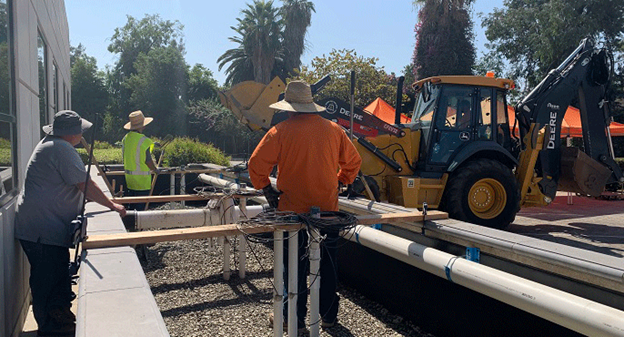The SMC has begun building a regional monitoring network to help address significant, persistent knowledge gaps in managers’ understanding of how to optimize the performance of a wide variety of structural stormwater BMPs (best management practices) across southern California.
The three-year initiative, which kicked off this winter with a pilot monitoring phase, will enable BMP designers, engineers and managers to collect high-quality, comparable data sets for BMP performance at multiple locations across southern California under a variety of different rainfall and site conditions.
The BMP performance data generated through the regional monitoring network will be used to inform long-term watershed planning efforts, as well as improve engineering design for multiple BMP types. Using the network, stormwater managers will be able to identify what data need to be collected to evaluate and optimize long-term treatment effectiveness for a variety of existing BMPs of different ages and maintenance protocols. The network will also help managers to identify conditions that compromise performance.

Much like the SMC’s Regional Watershed Monitoring Program that assesses the ecological health of thousands of miles of streams, the network will unify and build on existing, smaller BMP monitoring efforts developed by SMC member agencies, as well as bring into the fold member agencies that have not previously conducted BMP monitoring. Over time, participants will generate high-quality, comparable and compatible data sets reflecting the broad diversity of structural BMPs across southern California.
A key impetus for the monitoring network were data gaps identified during the five-year SMC CLEAN project, which developed best-practices guidance for implementing Low-Impact Development (LID) and green infrastructure systems. Among the SMC CLEAN project’s conclusions was that much more southern California monitoring data will need to be collected to improve understanding of how to optimize BMP performance in the region.
Eventually, the network is expected to become the largest of its kind in the nation – a necessity in southern California where opportunities to collect BMP performance data are limited by the region’s relatively infrequent rain events.
Structural BMPs are a ubiquitous class of engineered field solutions – everything from vegetated bioswales to permeable pavement to subsurface vaults – that are implemented to control, treat and manage wet- and dry-weather runoff.
BMP performance data sets are a foundational component of empirical and modeling analyses that can help inform the optimal design, construction, maintenance and placement of BMPs across southern California and beyond.
For more information and to become part of the SMC Regional BMP Monitoring Network, contact Dr. Elizabeth Fassman-Beck.
Dive deeper
SMC Winter 2022 Newsletter
Volume 2, Issue 2
This newsletter is published three times a year by the Southern California Stormwater Monitoring Coalition (SMC). To subscribe to this newsletter, contact [email protected].
